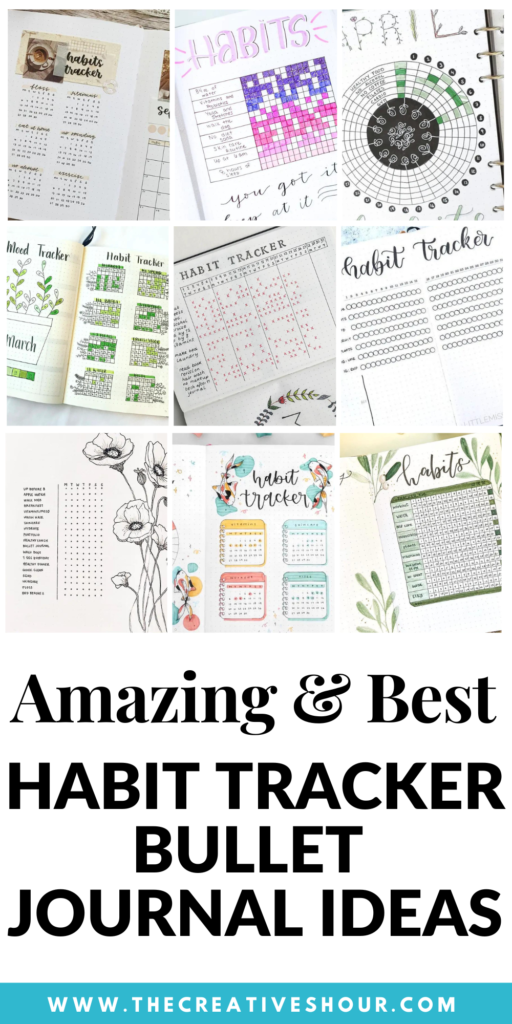
It is said that it takes only 21 days to build or get rid of a habit. And if you want to build a habit, then a habit tracker is a great tool to help you achieve that.
The most basic way to track a particular habit is by using a calendar and striking off each day you stick with your routine. And at the end of the period, you will have your habit streak.
However, when you use a regular calendar, you will only be able to track one habit at a time. But with bullet journal habit tracker layouts, you can track multiple habits in a format of your preference.
In this article, we’ll look at different types of bullet journal habit trackers. But before that, let’s start with the basics –
What Is A Habit Tracker? How Does It Work?
A habit tracker is a simple tool used to track your habits. One of the basic habit trackers is a calendar. Take the calendar of the month and cross off each day you stick to the routine.
For example, consider meditating every day is the habit you want to practice. Give an X on each day you meditate. If you meditate Monday, Tuesday and Saturday, each of those dates get an X. As time passes, this calendar becomes a record of your habit streak.
“What gets measured gets managed,” says Peter Drucker, the father of modern management. Therefore, habits can be managed by measuring (tracking) them. I know measuring is hard. But don’t worry, that’s where habit trackers come in. (2)
Top Benefits Of Using A Habit Tracker
A habit tracker helps in keeping your eye on the ball. You will get to focus on the process rather than the result. Therefore, you won’t be fixated on getting six-pack abs. Instead, you will be the person who is just trying to keep the streak alive and simultaneously become a person that doesn’t miss out on workout sessions (and hey you might just get your six-pack abs in the process). (3)
Moreover, using a habit tracker bullet journal provides you with direct evidence that you completed the habit. It is like a signal that indicates your progress. Here are some of its top benefits –
-
A habit tracker helps in reminding us to act by creating a visual cue. When you look at all the streaks on the calendar, you will immediately get reminded of working again.
-
It is always motivating to visually see the progress you are making as you don’t want to break your streak. Progress is the most effective form of motivation. When you know that you are moving forward, it is more motivational to continue down that path.
-
It is also very satisfying to record success. It is quite gratifying to cross something on the to-do list or to complete an entry in the log.
What All Can You Track In A Habit Tracker?
You can track a wide variety of habits and behaviors in a habit tracker. Here are some examples:
-
Daily routines: This includes things like waking up at a specific time, getting ready in the morning, and following a consistent bedtime routine.
-
Physical health: This includes tracking things like exercise, nutrition, hydration, and sleep.
-
Mental health: This includes tracking things like mindfulness practices, therapy or counseling sessions, and other self-care activities.
-
Productivity: This includes tracking tasks, projects, and goals that you want to accomplish, as well as how much time you spend on each activity.
-
Finances: This includes tracking your expenses, creating and sticking to a budget, and saving or investing money.
-
Learning: This includes tracking your progress in learning a new skill or subject, such as a new language, musical instrument, or academic subject.
-
Relationships: This includes tracking the time you spend with family and friends, the quality of your interactions, and any goals you have related to building stronger relationships.
-
Personal growth: This includes tracking progress towards personal goals, developing new habits or behaviors, and breaking old habits or behaviors.
Read – How To Bullet Journal – Complete Guide To Bullet Journaling
15 Types Of Habit Trackers
Bullet journaling offers a variety of habit tracking options, from simple daily habit trackers to more complex level 10 life trackers. The type of habit tracker that works best for an individual depends on their goals, habits, and personal preferences. Here are the different types of habit trackers to choose from –
1. Monthly Habit Trackers
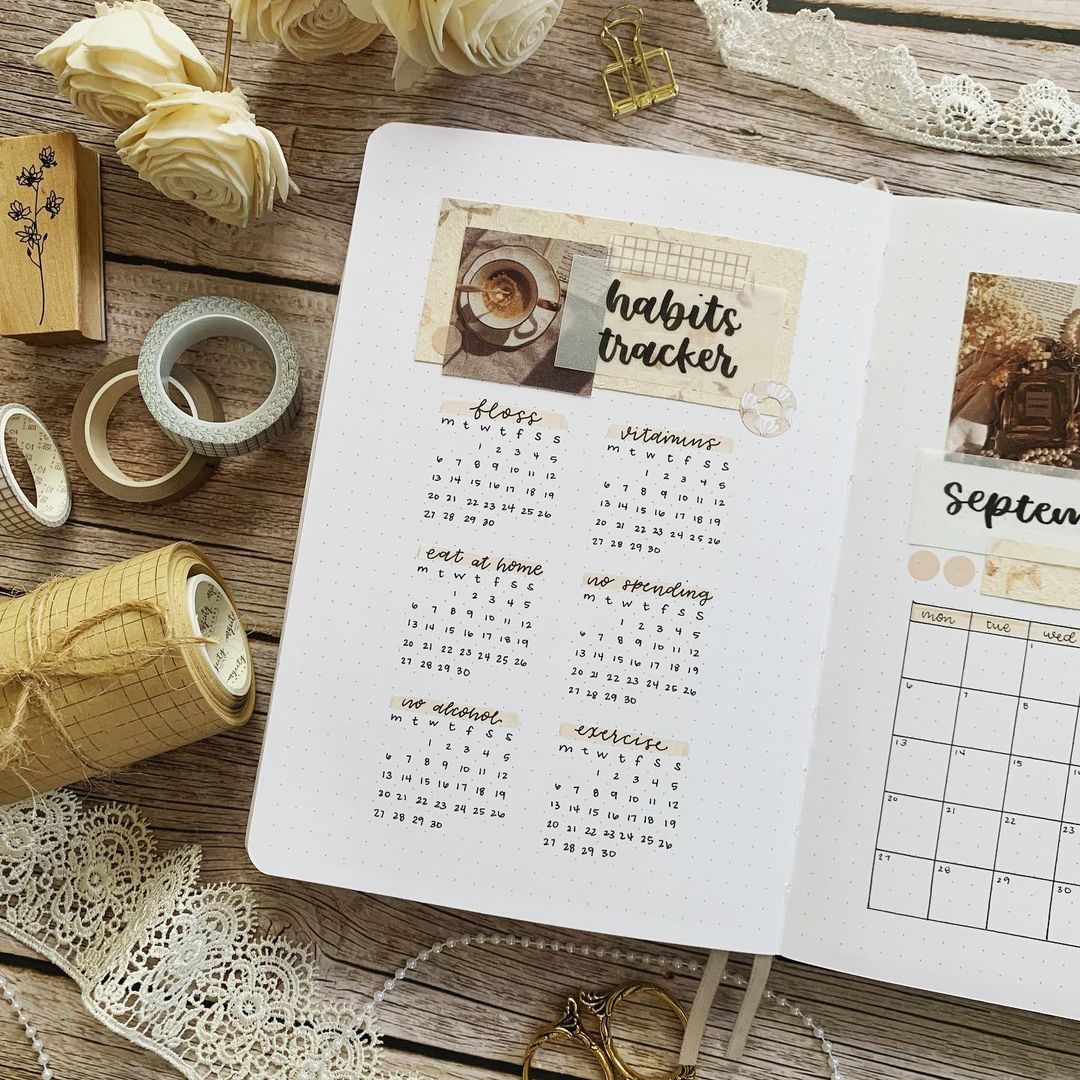 Source – wiscobujo
Source – wiscobujo
A monthly habit tracker is a monthly layout to track your habits and actions. In my opinion, monthly habit trackers are even better than weekly habit trackers as you can easily see your 30 days of progress in a single spread.
Though they take more time to create initially, a monthly tracker can be a great way to organize all of your activities. And it can be very satisfying to see your success eventually. However, with this tracker, it is not easy to change your habits as you have to wait an entire month to create a new chart.
You can track your expenses, spending, savings, fitness, sleep, mood, water intake, medication, reading, cleaning, skincare routine, etc. in a monthly habit tracker.
2. Weekly Habit Trackers
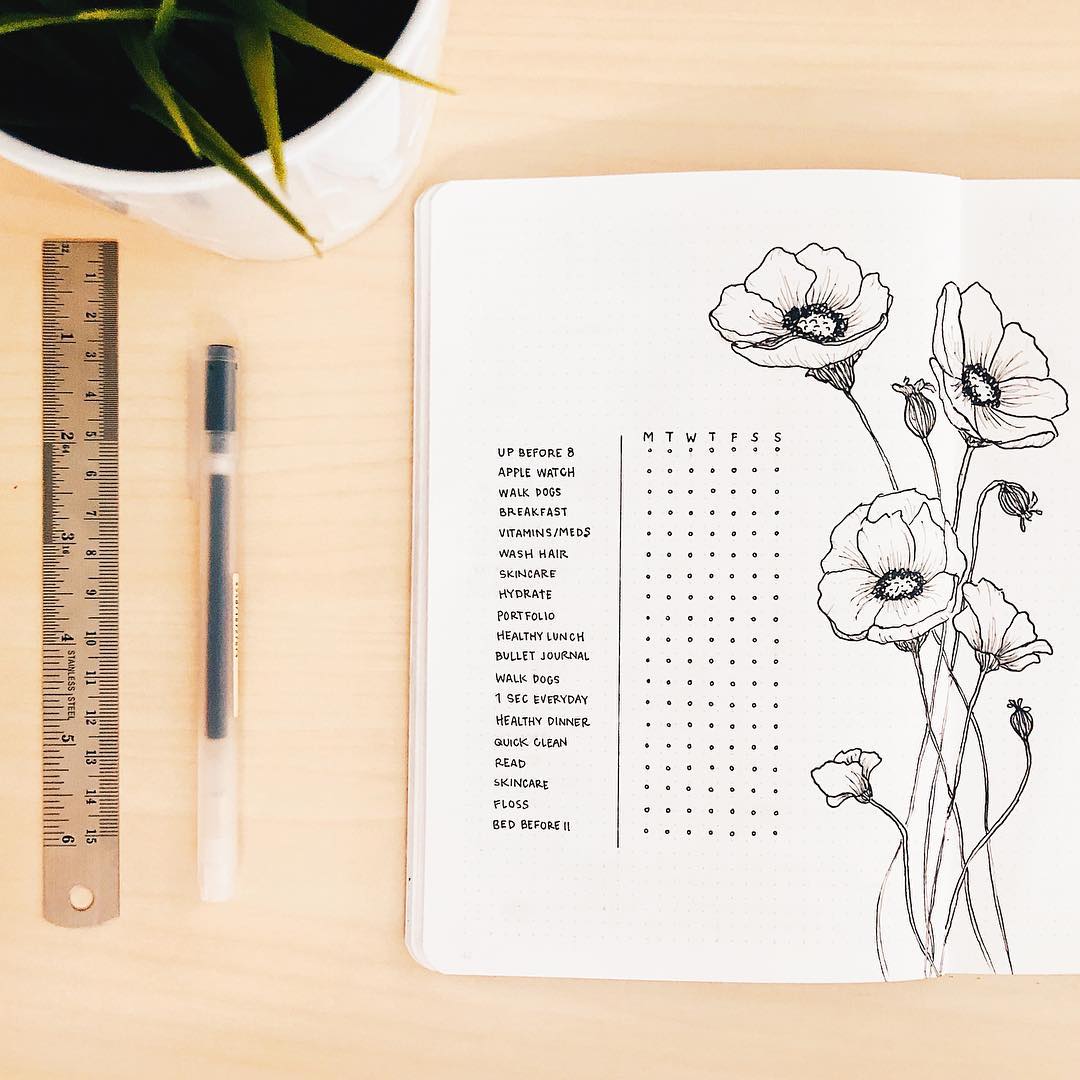
Source – journautical
A weekly habit tracker is a weekly layout to track actions. I love weekly tracking, as it is easier to commit for a shorter period. You can analyze your progress and make adjustments during the next week.
However, since these trackers are laid weekly, you will not be able to see the entire progress in a single spread. It can be challenging to organize the information from all the weekly layouts.
You can plan your meals, workouts, outfits, homework, meditation, homeschooling schedule, skills like learning instruments, this week’s kid activities and the like in your weekly trackers.
3. Yearly Habit Tracker
![]()
A yearly bullet journal tracker is a type of habit tracker that helps individuals keep track of their goals and progress over the course of a year. This type of tracker is useful for those who want to establish long-term habits, achieve their goals, or maintain a consistent routine throughout the year. You can usually track only one yearly habit with one page of a bullet journal.
4. Circular Habit Trackers
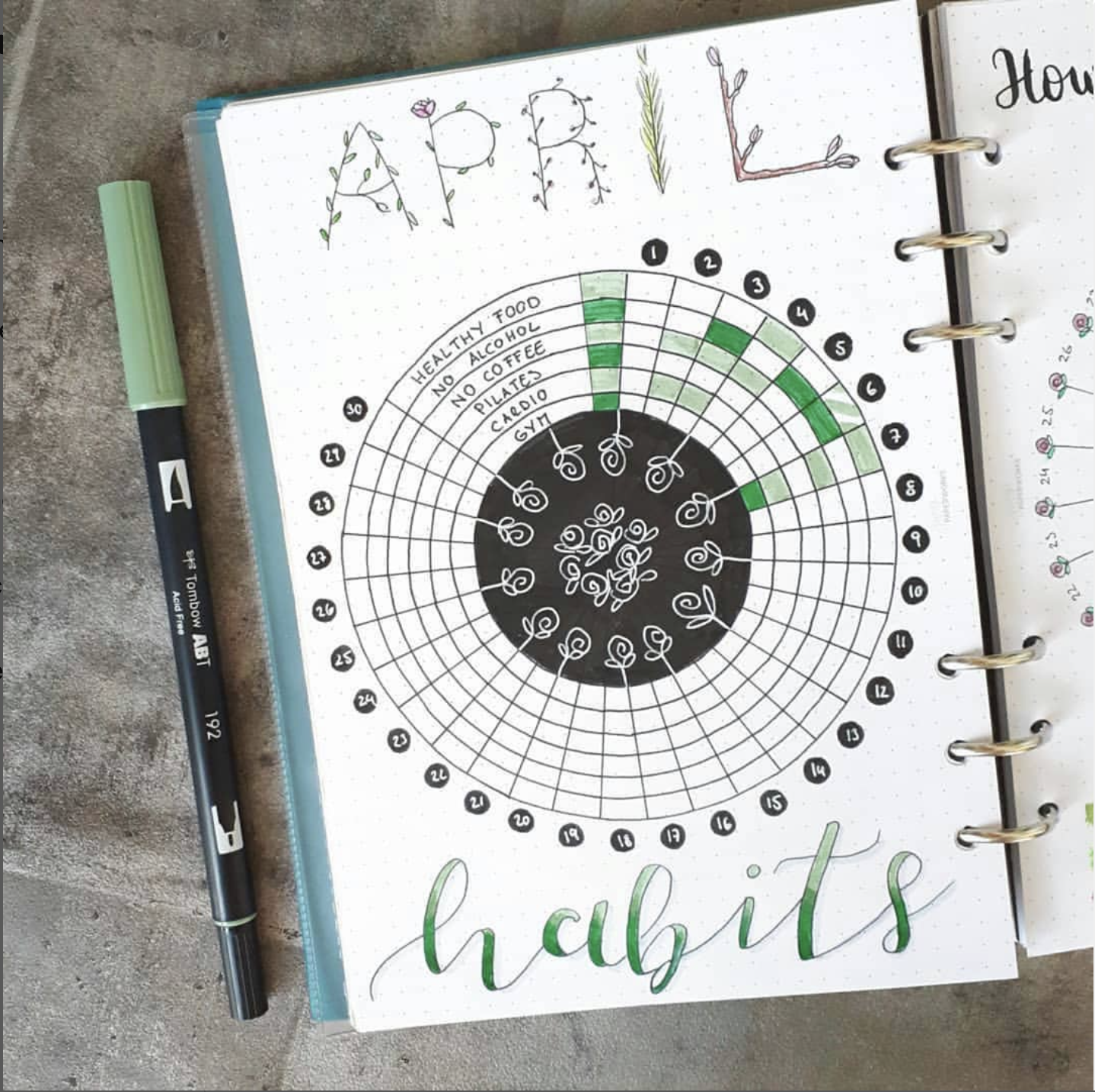 Source – seras.bullet.journal
Source – seras.bullet.journal
Unlike traditional bullet journal trackers that use rectangular or grid-style layouts, circular habit trackers use a circular design that is divided into sections. The habits being tracked are written or illustrated in the sections of the circle.
Each habit is assigned a section of the circle and is given a unique color, symbol, or pattern. To track progress, users can fill in or color in the sections of the circle that correspond to the habit they completed that day.
5. Mini Habit Trackers
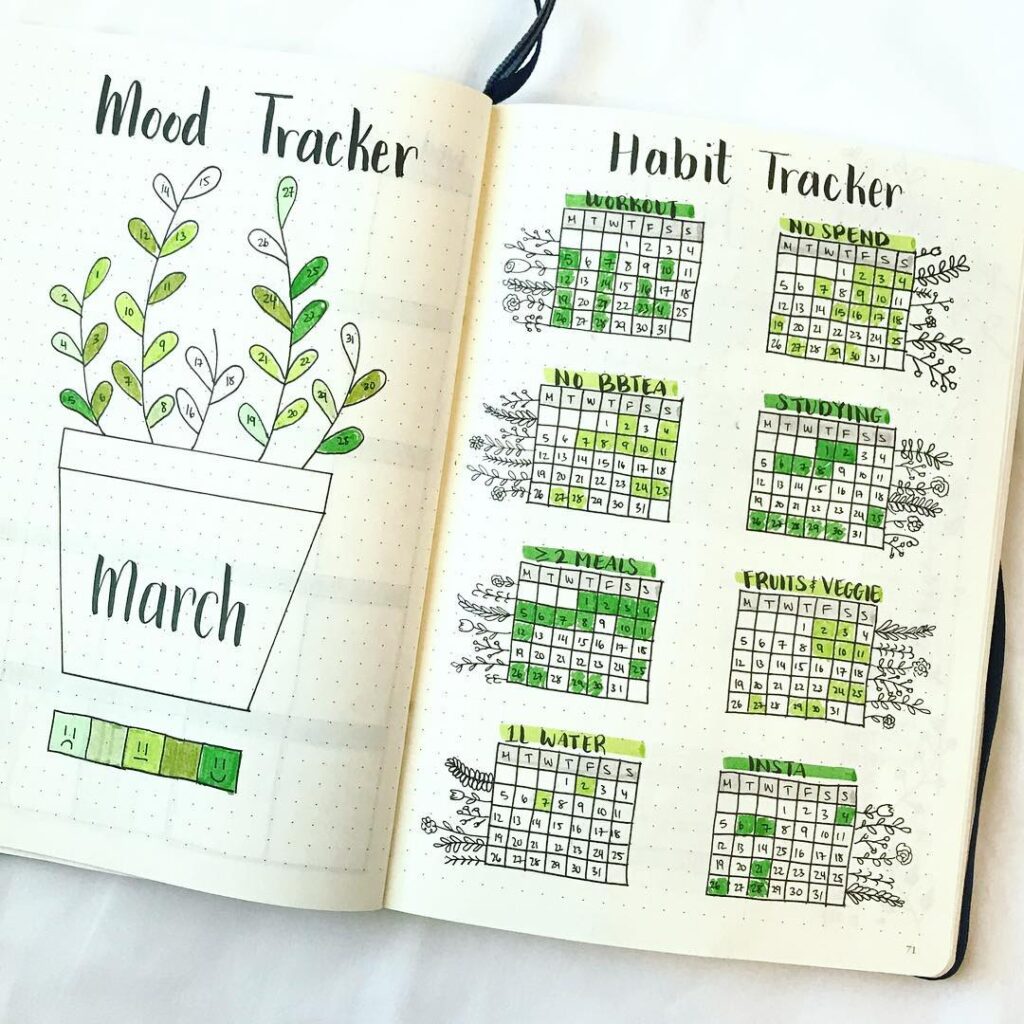
A mini habit tracker in a bullet journal allows individuals to track their progress on daily habits. The layout is such that it doesn’t occupy too much space. The tracker is designed to be compact and easy to use, with enough space to mark off each habit completed each day. Because such habit trackers don’t occupy much space, they can also be placed in the same layout as mood tracker.
6. Linear Habit Trackers
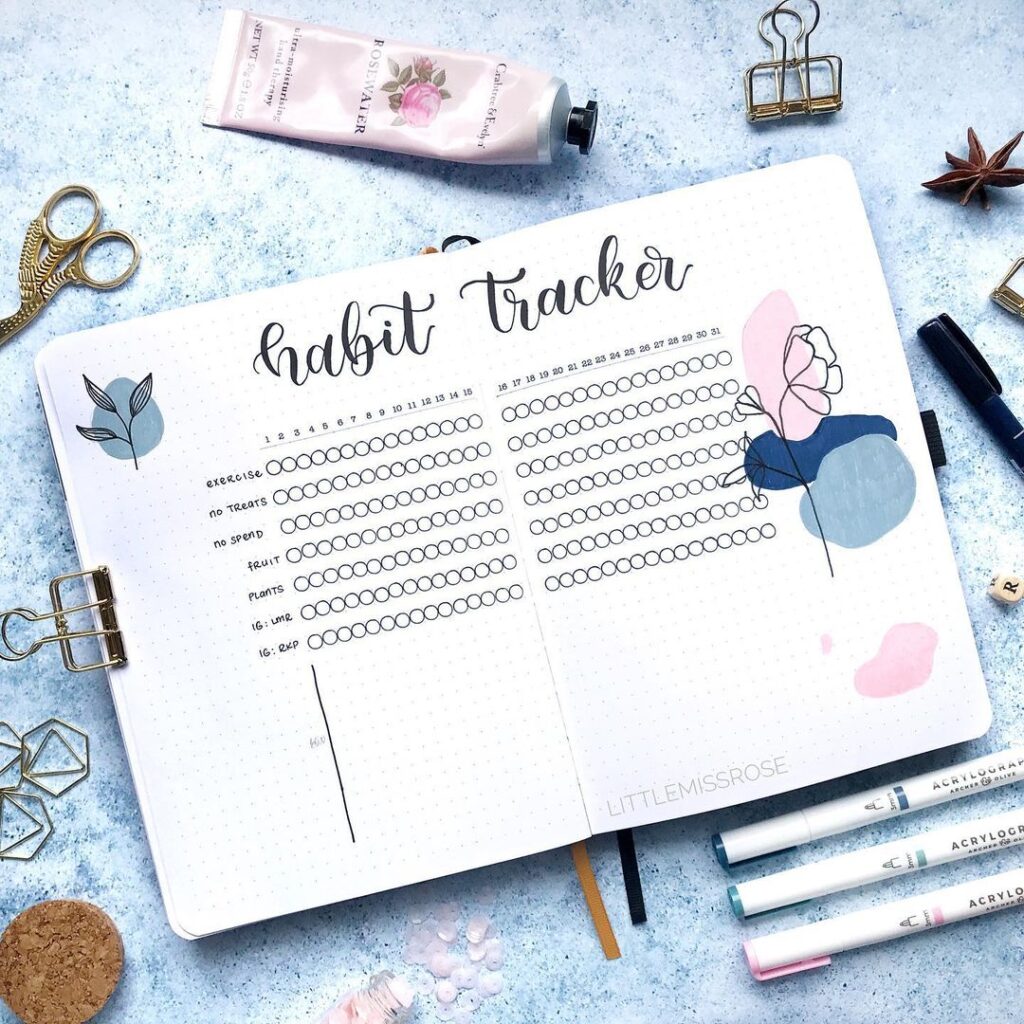
A linear bullet journal habit tracker is a popular way for tracking habits over a period of time. It involves creating a simple chart or table with habits listed on the left-hand side and dates on the top. Each day, you mark off whether or not you completed each habit.
7. Minimalist Habit Tracker
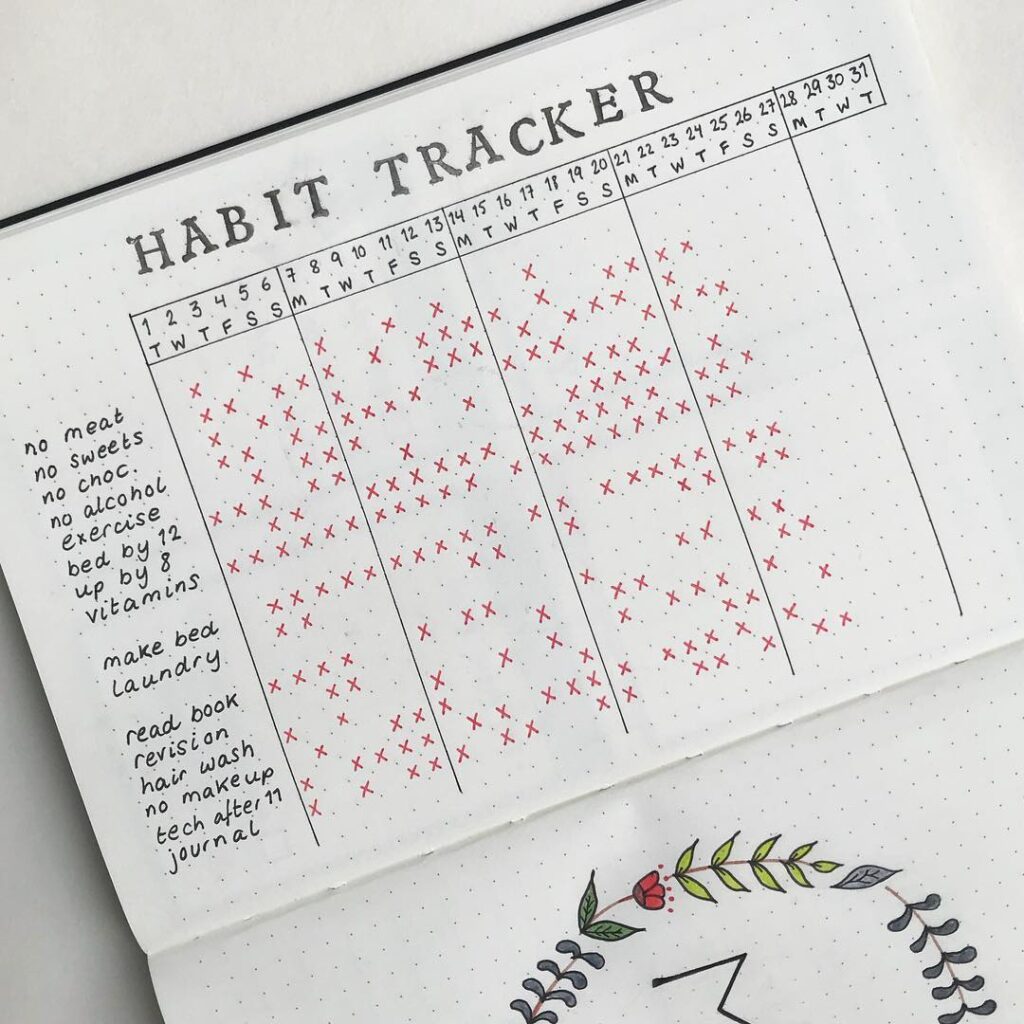
If you don’t want to spend too much time in creating the layout, then this minimalist way of tracking your habits is perfect for you. Simply list all the habits you want to track in your bullet journal and then start marking cross for each day you successfully complete that habit.
8. Grid Habit Tracker
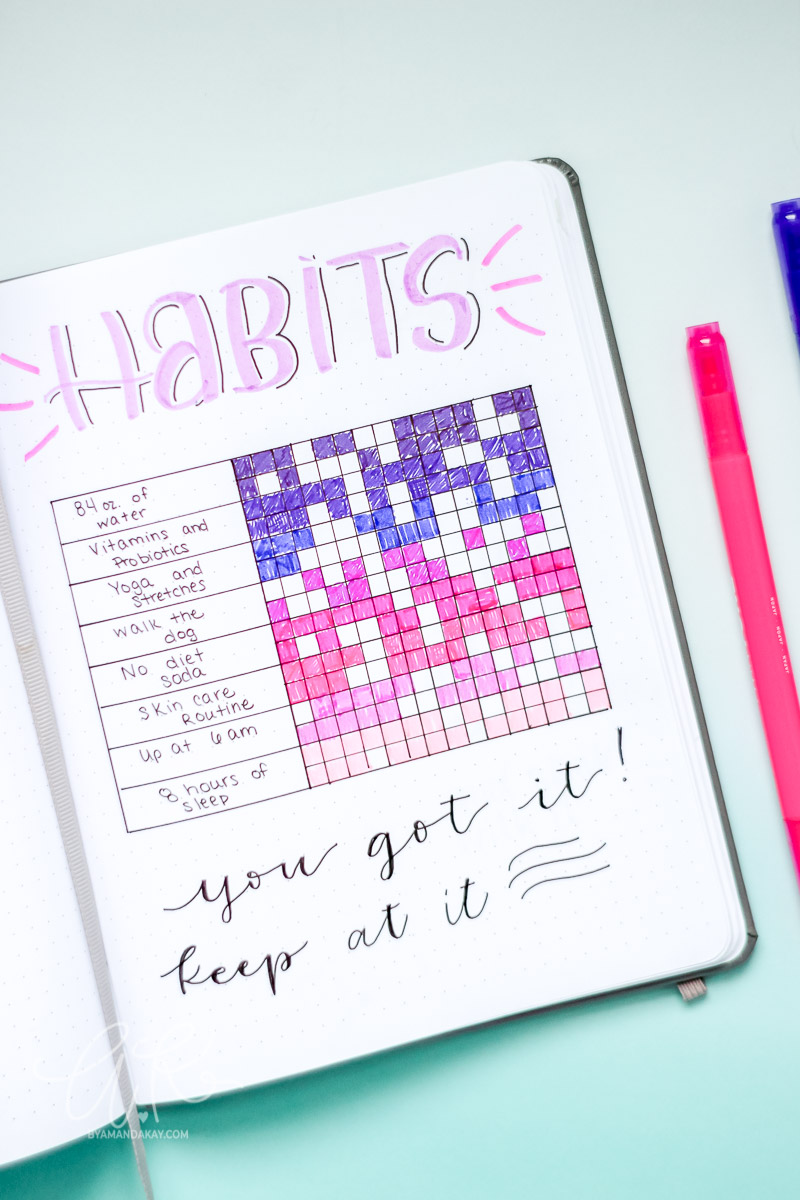
Source – byamandakay.com
To create a grid bullet journal habit tracker, start by drawing a table with the desired number of rows and columns. Each row represents a habit or activity that you want to track, while each column represents a specific day of the week or month.
By looking at your tracker regularly, you can identify trends and patterns in your habits and make adjustments as needed. It can also be a source of motivation as you see yourself making progress towards your goals.
9. Mini Calendar Habit Tracker
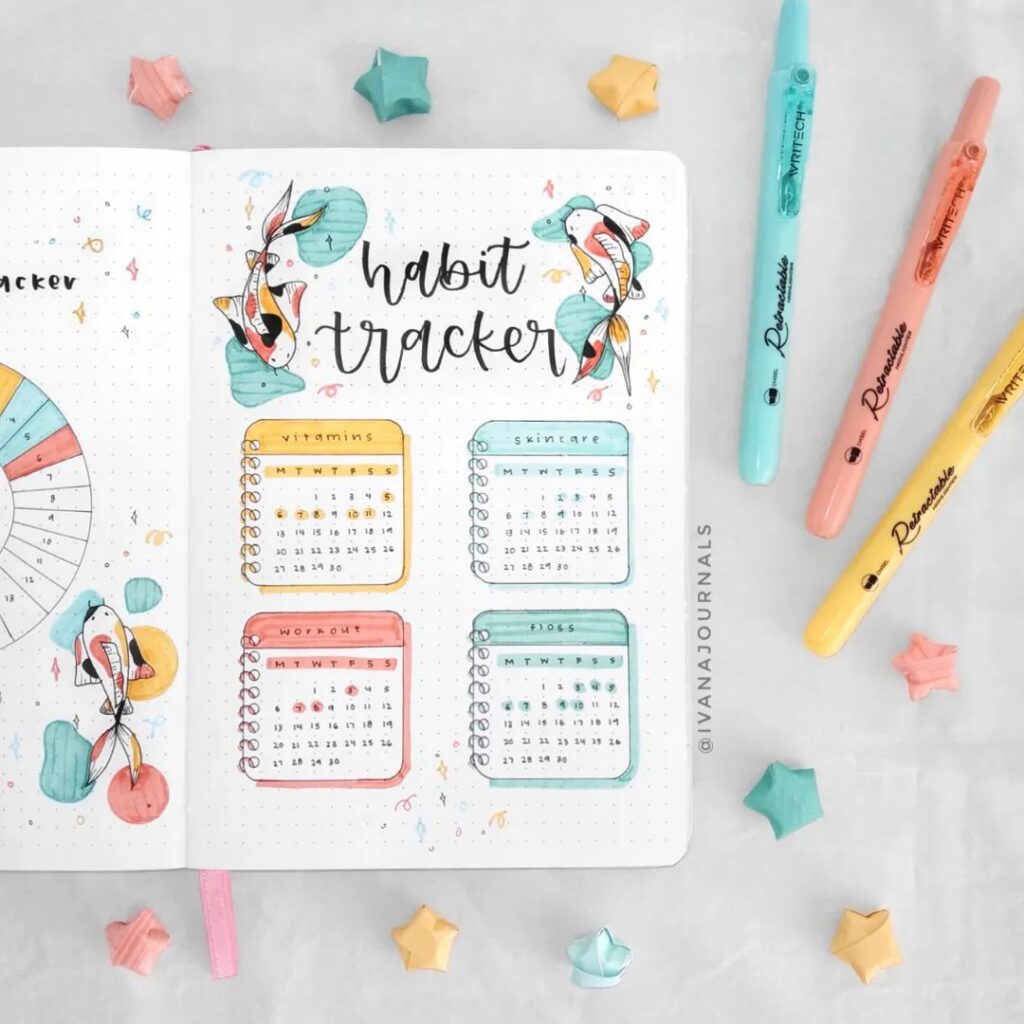
To track your habits each day in a mini calendar habit tracker, simply mark the corresponding symbol or mark on the calendar for each habit that you completed. Over time, you will be able to see a visual representation of your progress and identify trends or patterns in your habits.
10. Table Habit Tracker
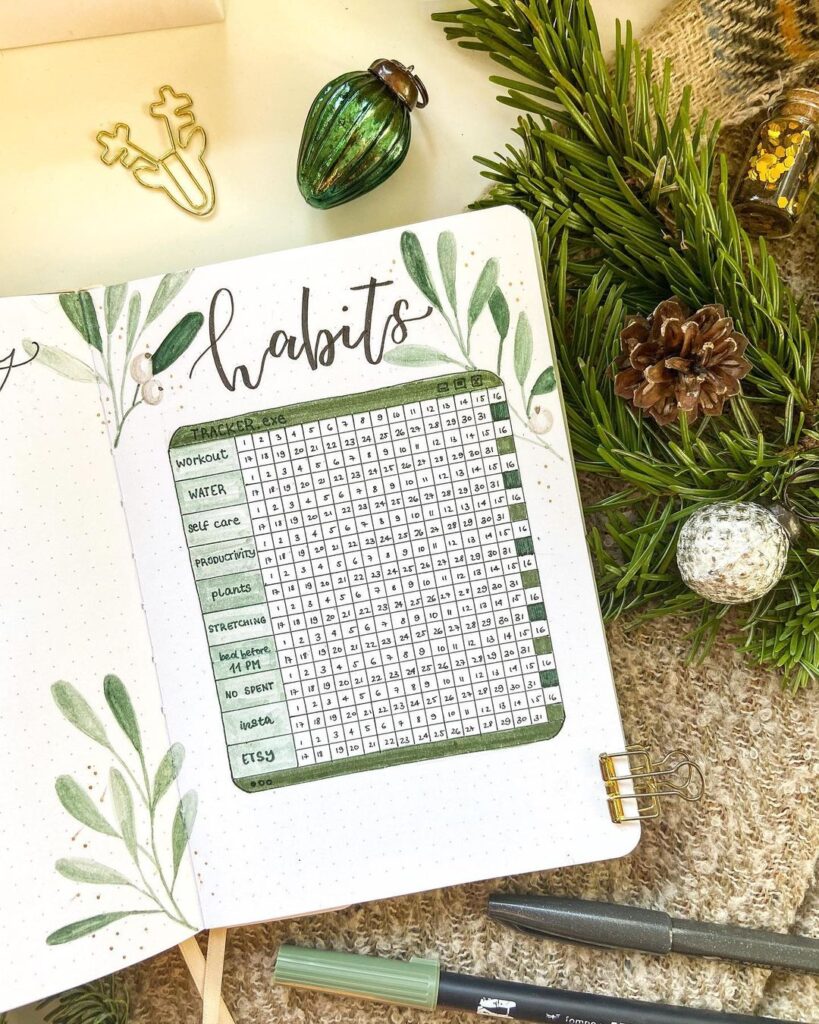
Write the habits or activities that you want to track along the rows of the table. For example, if you want to track your exercise habits, you might write “run”, “yoga”, or “strength training”. If you want to track your water intake, you might write “8 cups of water”, “hydration goals”, or “drink water every hour”.
Once you have created your table habit tracker bullet journal, fill in the squares or cells each day to indicate whether you completed the habit or activity. For example, if you completed your morning run, you would fill in the square or cell corresponding to “run” and that day of the week or month.
Also, read – 35 Free To-Do List Printable Templates To Get You Organised
11. Illustrated Habit Tracker
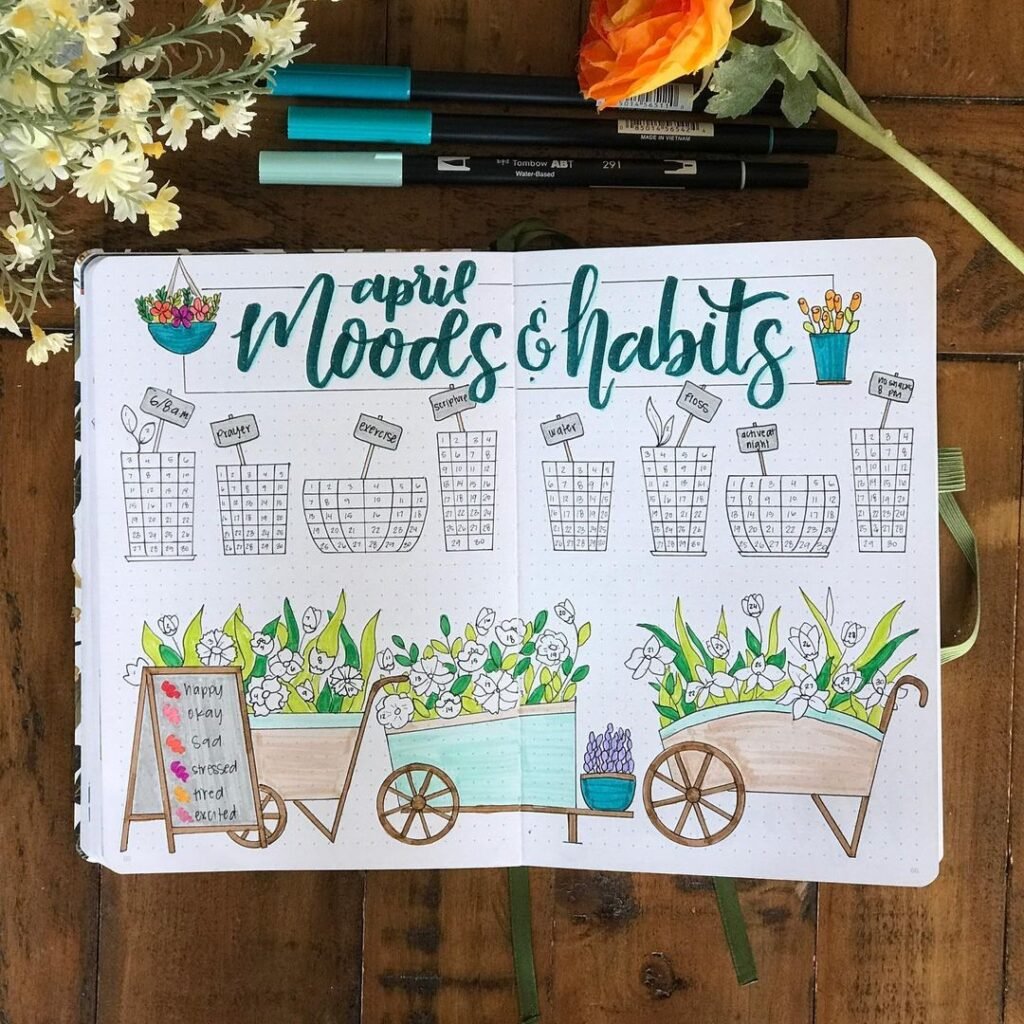
A creative and fun way to track your habits and routines us using simple illustrations or doodles. It involves creating a visual representation of your progress over time, which can be both motivating and enjoyable.
12. 100 Days Habit Tracker

Want to create a 100 day streak? Use this habit tracker to track your habits for 100 days in a row. Each of the mini triangles denote a day and you can fill inside it every time you successfully complete the habit.
13. Semi-Circular Habit Tracker
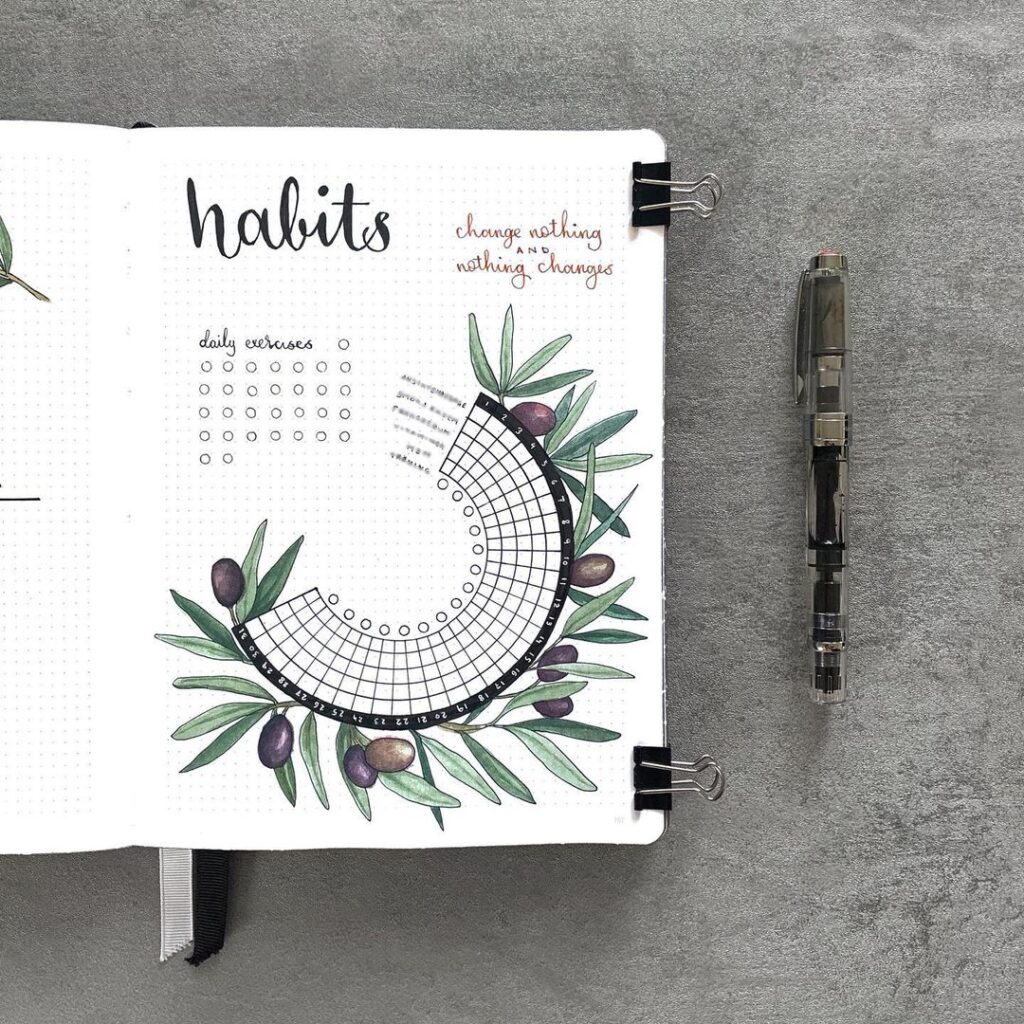
A semi-circle bullet journal habit tracker is a unique and visually appealing way to track your habits and progress towards your goals. Instead of using traditional grids or tables, a semi-circle habit tracker is a circular chart that allows you to track your habits in a creative and fun way.
14. Hexagonal Habit Tracker
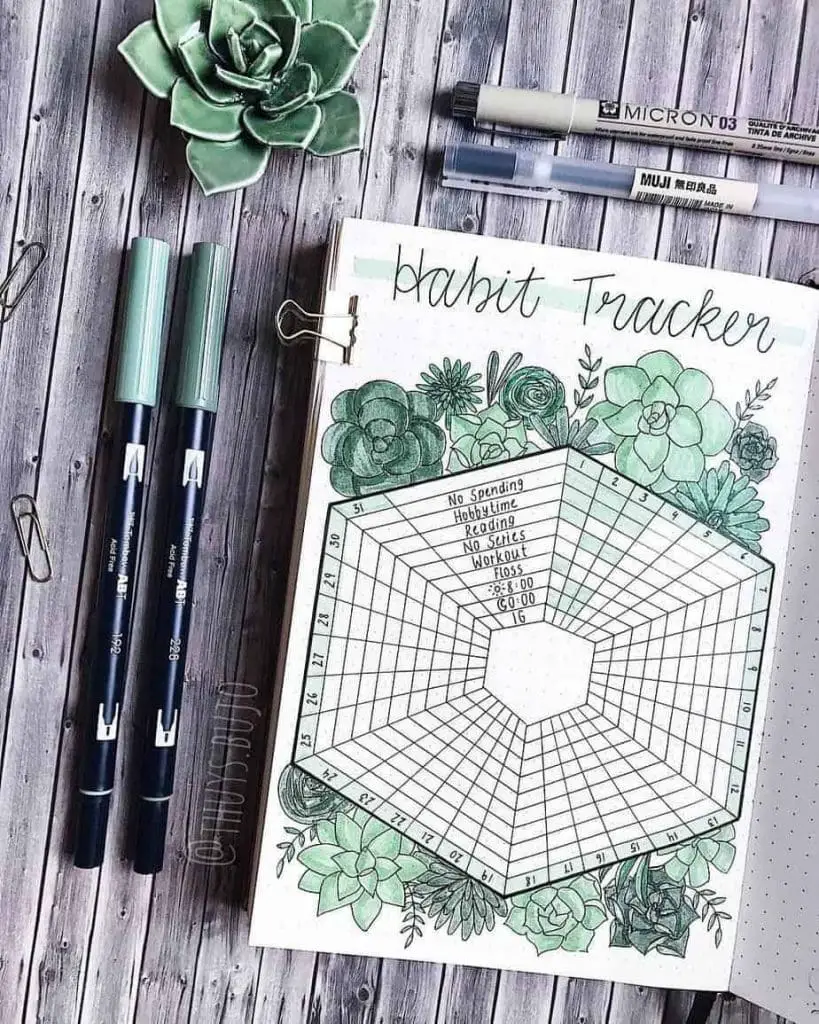
Want innovative designs for creating your habit tracker layout page? This hexagonal layout is unique and for those of you who love colouring, filling in this hexagon would be a huge motivation to continue with your daily habit goals.
15. Index Habit Tracker
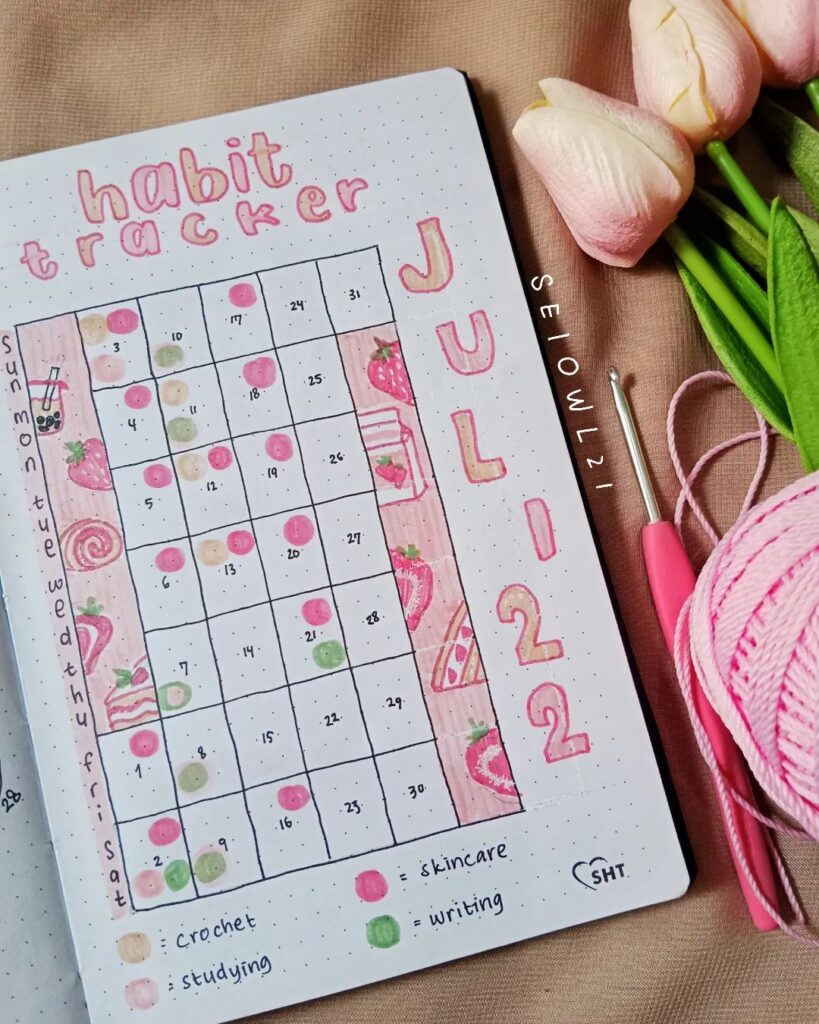
This innovative way of habit tracking requires you to create a colour index for each of your habits. Then you can simply use a monthly layout page for habit tracking by putting in a coloured circle corresponding to the completed habits for each day.
Complete List Of Bullet Journal Habit Tracker Ideas
Here is a category-wise list of things that can be tracked in a habit tracker:
Health and Fitness:
- Exercise (e.g., strength training, cardio, yoga)
- Running, walking, or cycling distance
- Water intake
- Daily steps taken
- Hours of sleep tracker
- Meditation or mindfulness practice
- Tracking food intake or meal planning
- Avoiding certain foods (e.g., sugar, caffeine, processed foods)
- Going to bed on time
- Not hitting snooze
- Following skincare routine
- No screen 30 minutes before bed
Personal Development - Reading or listening to audiobooks
- Practicing a new skill or hobby (e.g., playing an instrument, painting)
- Writing or journaling
- Learning a new language
- Volunteering or community service
- Spending time in nature or practicing outdoor activities
- Spending quality time with family and friends
- Limited social media time
Professional Development: - Completing work-related tasks (e.g., responding to emails, attending meetings)
- Learning new professional skills
- Networking or attending industry events
- Time management or productivity
- Avoiding distractions (e.g., social media, procrastination)
Finance: - Tracking daily expenses
- Creating and sticking to a budget
- Saving a specific amount of money each week or month
- Paying off debt
- Investing or tracking investment performance
Self-Care and Mental Health: - Skincare routine
- Taking prescribed medication
- Going to therapy or counseling
- Practicing self-compassion or self-care activities
- Taking breaks from work or social media
- Gratitude log
Environmental: - Reducing waste (e.g., recycling, using reusable bags)
- Conserving energy (e.g., turning off lights, using energy-efficient appliances)
- Reducing water usage (e.g., taking shorter showers)
- Eating vegetarian or vegan meals
- Using environmentally-friendly products
These are just some examples, and you can customize your habit tracker to fit your specific needs and goals.
